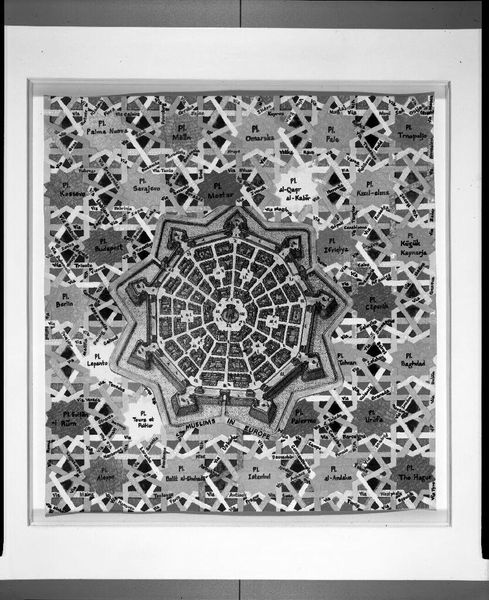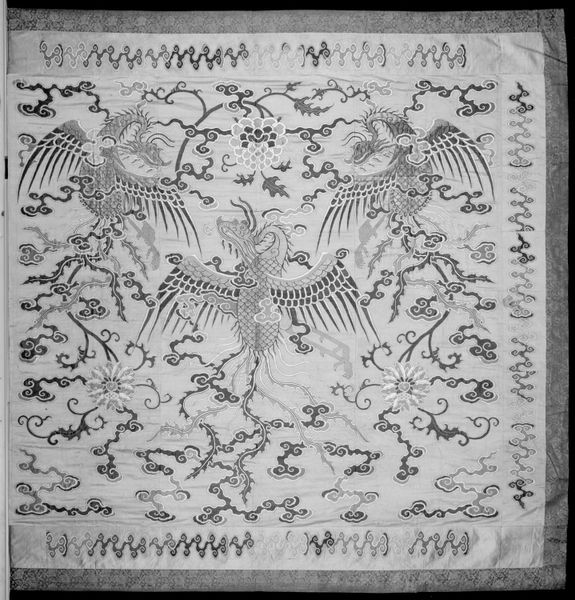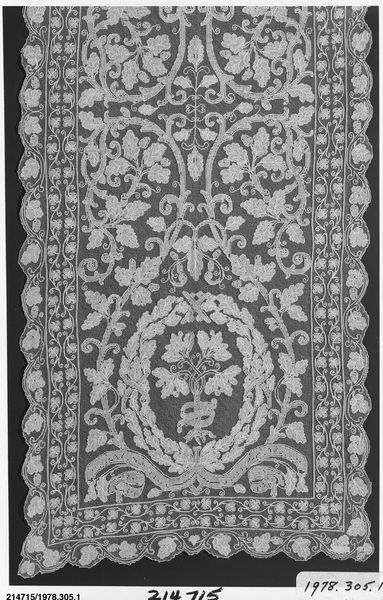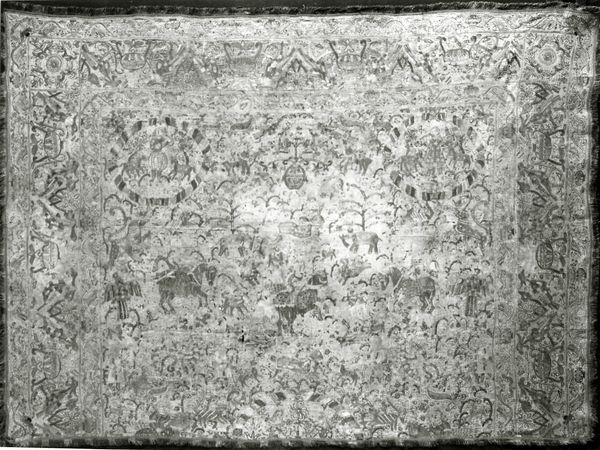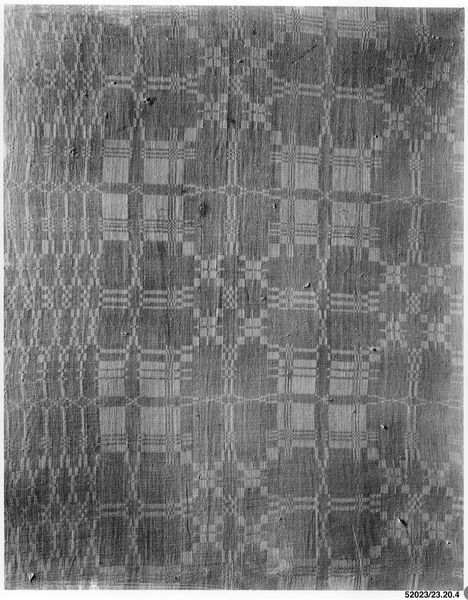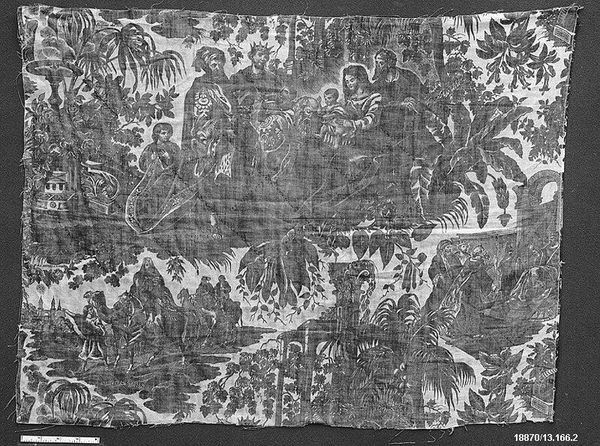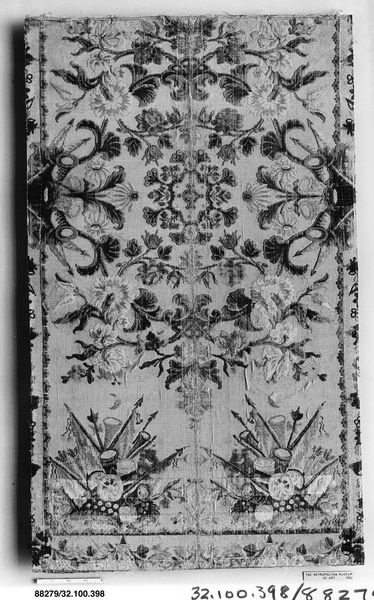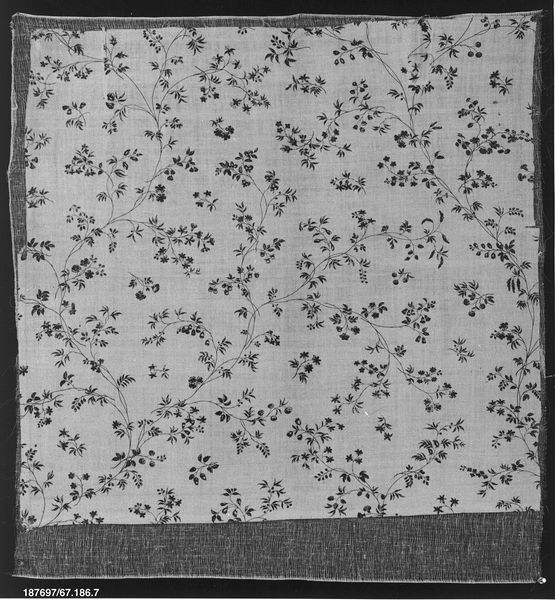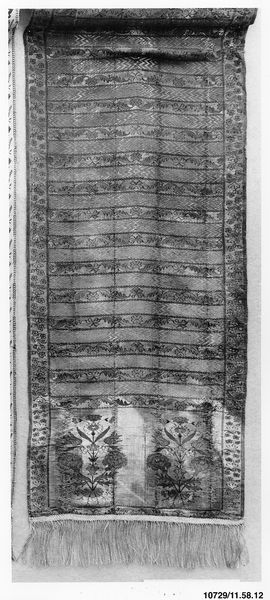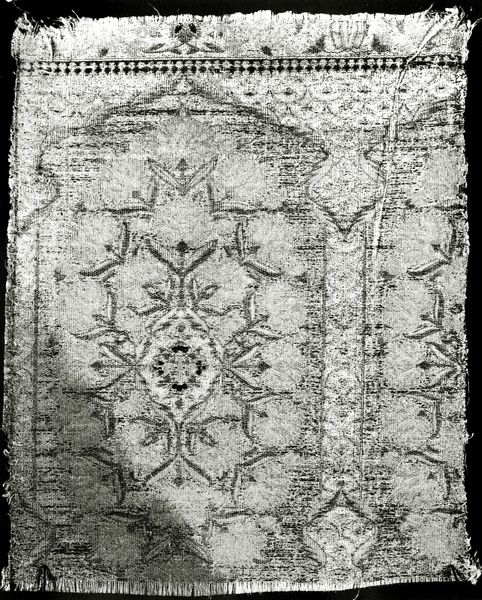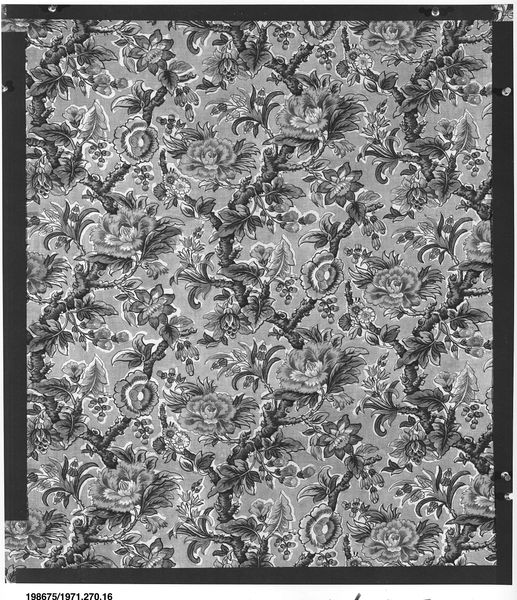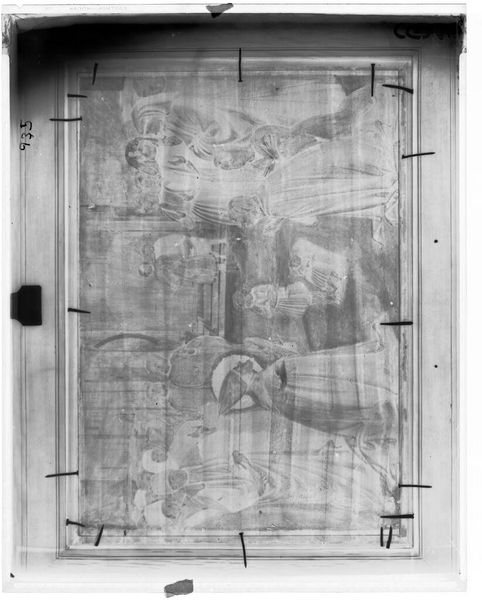
weaving, textile
#
asian-art
#
weaving
#
textile
#
indigenism
#
figuration
#
geometric
#
decorative-art
Copyright: Public Domain
Curator: This textile work, dating to the 17th century, is known as "Bedcover," and is attributed to an Indo-Portuguese origin. The bedcover resides here at The Art Institute of Chicago. Editor: It strikes me immediately with a strange, haunting quality, despite the simple decorative nature of the imagery. There's a rawness to the weave, and the faded monochrome lends it an antique solemnity. Curator: It’s remarkable what survives, isn’t it? Think of the process and labor that went into crafting a textile of this size, the sourcing of materials, the preparation of dyes if there were original colors… consider the weaving, the stitching... Editor: Exactly. And those choices signify. An Indo-Portuguese bedcover instantly makes me think of cross-cultural exchanges, colonial power dynamics, and the negotiation of identity through material objects. What stories could this cloth tell about domestic spaces and the women who labored over its creation? Curator: Precisely. The use of cotton, versus silk, impacts its texture, availability, and the types of dyes that could adhere. Someone, or likely multiple people, made calculated decisions in every thread and knot. Editor: We have an example of a shared visual vocabulary – those almost heraldic-looking animals echo both European and Indian artistic traditions. It’s a dialogue expressed through threads. Those composite animals speak to trade routes. Curator: The decorative schema, the geometric structure of the border pattern in contrast to the naturalistic and often hybridized animal representations within… all were dictated by available resources and skills, each affecting cost and aesthetic impact. Editor: Beyond a mere aesthetic choice, each motif bears historical weight, shaped by colonial realities. I keep wondering who owned it? Was this for a European household asserting status, or for an Indian family adapting to the influences? Or did this blend signify resistance? Curator: Textiles often fall into the category of "minor arts", but the complexity behind the weaving reveals much more than a piece of decorative cloth. It unveils details regarding class, technology, and even perhaps the religious standing of its original crafters and consumers. Editor: Absolutely, this "Bedcover" is anything but passive. It serves as a tangible example of hybridity, survival, and maybe even quiet acts of subversion within a complex colonial landscape. Curator: Viewing this work allows us a peek into lives lived centuries ago, by examining closely the evidence in texture and structure and design we gain a wider scope into its process, and through that a story of place, time and toil emerges. Editor: Indeed, this singular object holds multitudes within its woven depths. A window onto a complicated and compromised past.
Comments
No comments
Be the first to comment and join the conversation on the ultimate creative platform.
